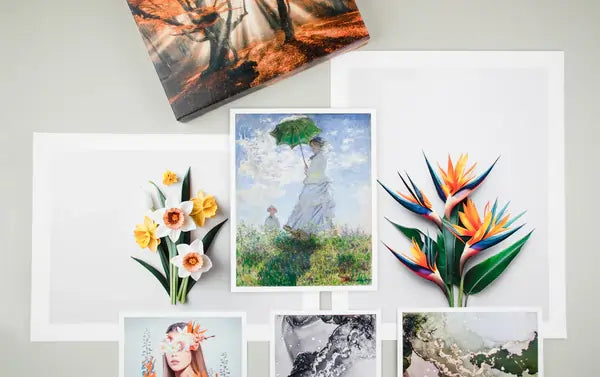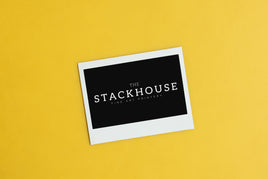TL;DR: The paper you choose for your photo prints affects texture, color, and longevity. Learn how to select the right finish, weight, and coating for professional, long-lasting prints that bring your photography to life.
Why Paper Choice Matters
A photo captures a moment in time, but the paper you print it on determines how that moment feels. The right material enhances sharpness, color depth, and texture, while the wrong choice can leave your images flat or dull. Whether you are printing for clients, galleries, or personal projects, understanding your paper options helps ensure every print reflects your vision.
Understanding Photo Paper
Photo paper is specifically designed to absorb ink evenly, preserve color detail, and produce high-resolution results. It’s coated to prevent ink bleed and optimize saturation. The coating—called the receiving layer—affects drying speed, gloss level, and archival performance. There are two main coating types to know:
Microporous or Nanoporous Coating
This coating uses microscopic silica-based pores that absorb pigment instantly. It provides fast drying times, sharp definition, and excellent water resistance—ideal for professional photo prints and gallery work.
Cast Coated
Cast-coated paper achieves its smooth, glossy finish through hot pressing. While the result is brilliant and reflective, it requires longer drying time, so handle carefully to prevent smudging.
Popular Types of Photo Paper Finishes
Different paper finishes affect how your image looks under light and how it feels in hand. Here are the five most common types photographers use:
Glossy
Glossy paper provides a polished, high-contrast look with bright highlights and saturated colors. It’s ideal for bold, vibrant images but can show reflections and fingerprints. Wipe gently with a soft cloth to maintain a pristine finish.
Matte
Matte paper offers a non-reflective surface with soft color rendering. It’s excellent for portraits and black-and-white prints displayed under bright lighting. However, matte papers tend to mute deep shadows slightly compared to glossy finishes.
Luster
Luster paper balances glossy and matte qualities. It has a slight sheen and fine texture, offering realistic skin tones, rich blacks, and crisp whites. Many professionals prefer luster for wedding and portrait photography. Learn more about surface differences in our article on matte finishes for art prints.
Silk
Silk photo paper has a lightly textured surface that adds sophistication and a vintage feel. It’s perfect for fine art photography, editorial work, or prints that need a subtle tactile finish.
Metallic
Metallic paper creates a luminous, dimensional effect with reflective highlights. It’s ideal for high-contrast images, deep blacks, and bold colors that pop. This premium finish is popular for landscape, automotive, and fashion photography.
How Paper Weight Impacts Print Quality
Paper density—measured in grams per square meter (gsm)—affects both feel and durability. Heavier papers feel more substantial and resist bending or warping. Weight also contributes to the archival quality of a print, influencing how long it resists yellowing or fading.
- 120 gsm +: Common for flyers or temporary prints; flexible but not archival.
- 200 gsm +: Professional-grade stock suited for gallery and long-term display prints.
Choosing the Right Material for Your Photography
Even in the digital age, printed photography remains an essential part of professional presentation. The right paper transforms your digital file into a tangible, lasting work of art. Matching finish, coating, and weight to your image style ensures consistency across client orders and exhibitions.
For more on preparing print files, see our guide on image resolution for picture-perfect prints.
Professional Printing Services You Can Trust
Printing your photos professionally guarantees color accuracy, archival quality, and precise craftsmanship. At The Stackhouse, our professional photography printing services use Epson SureColor printers and premium media to ensure every image looks stunning and lasts for generations.
Ready to print your photos? Upload your files through our Order Page or request a free media sample set to compare paper textures and finishes before your next project.









